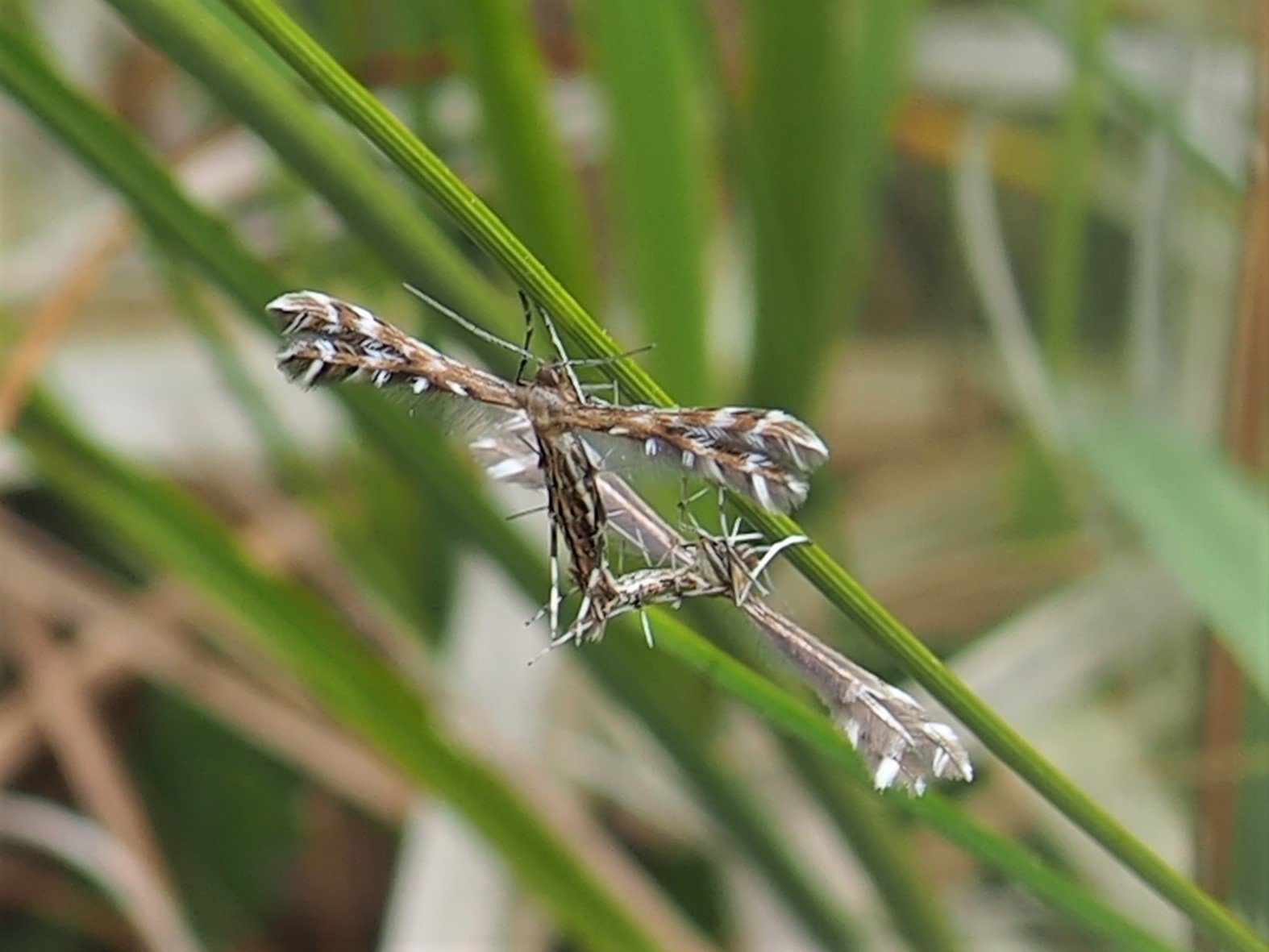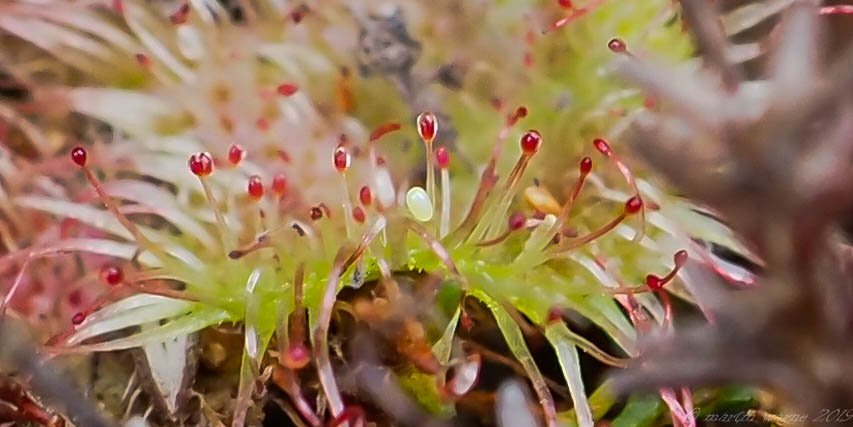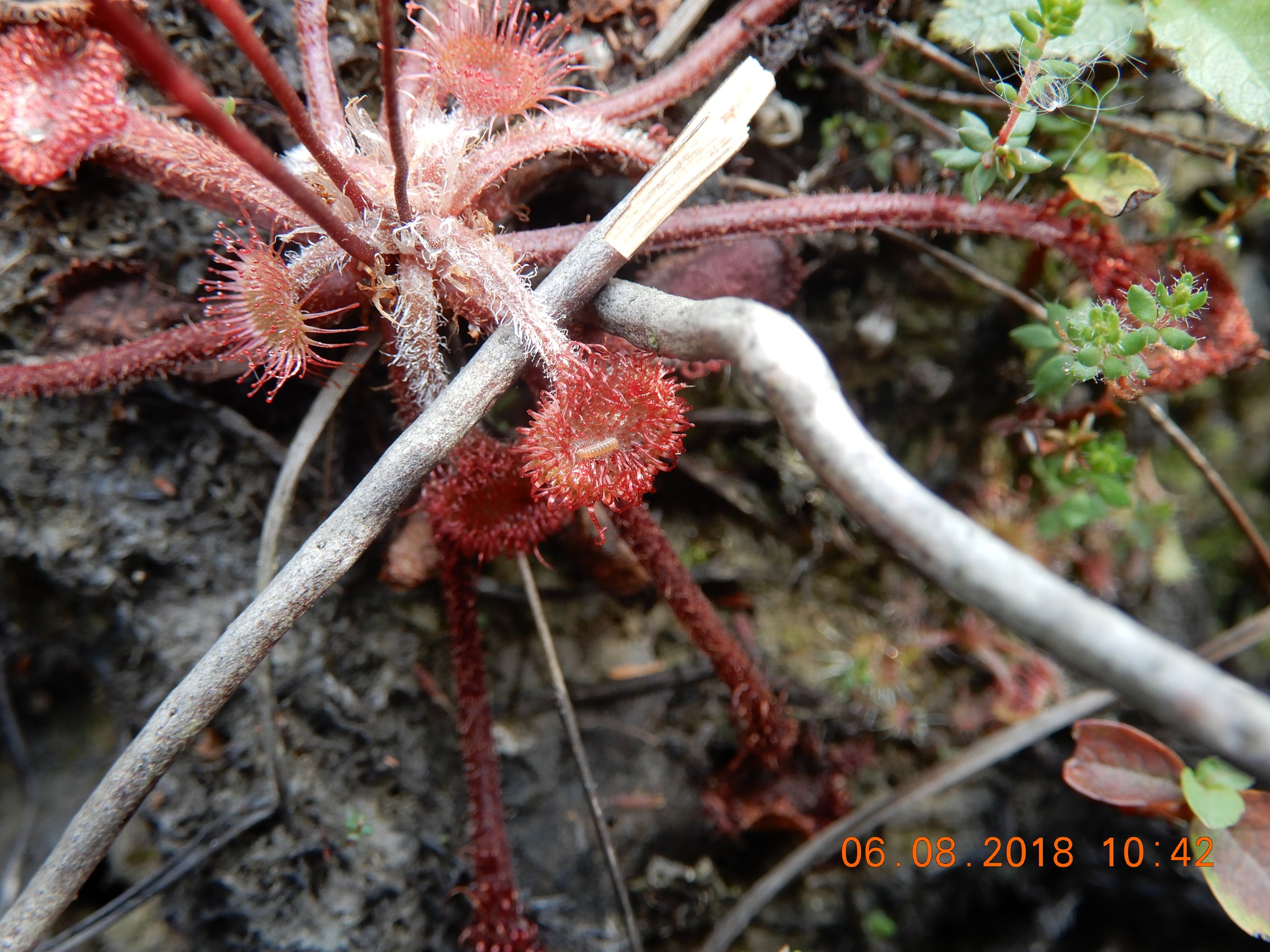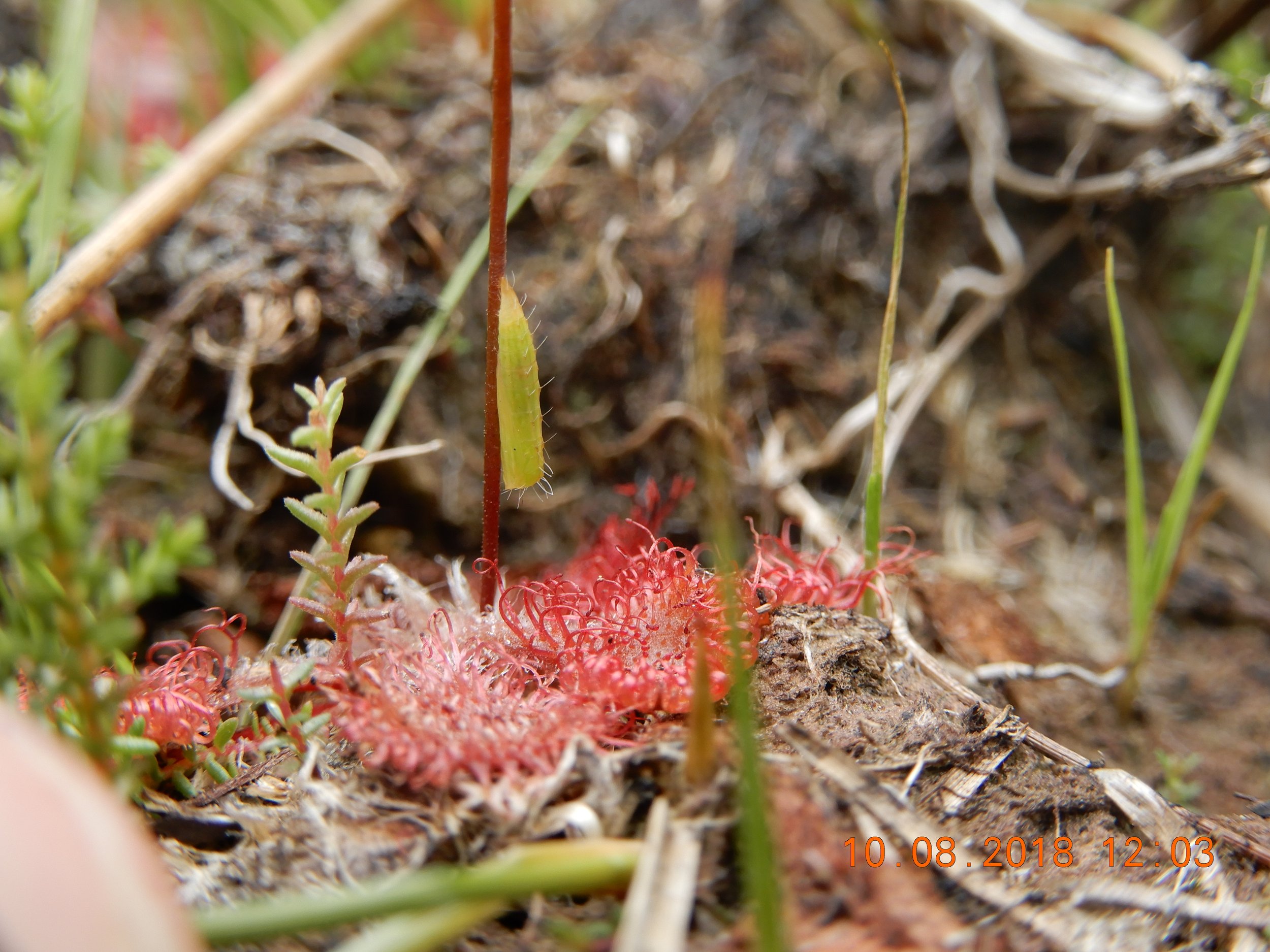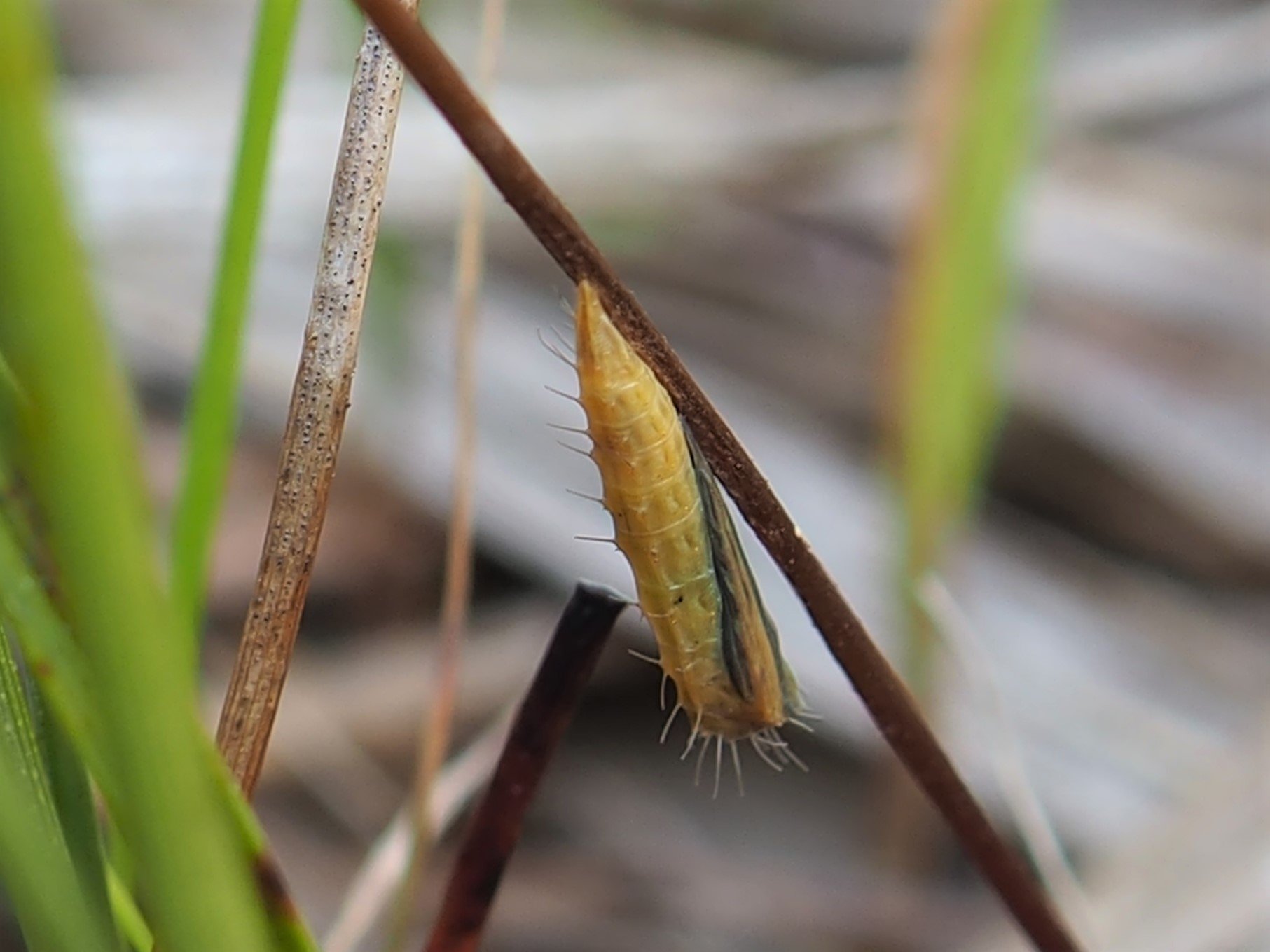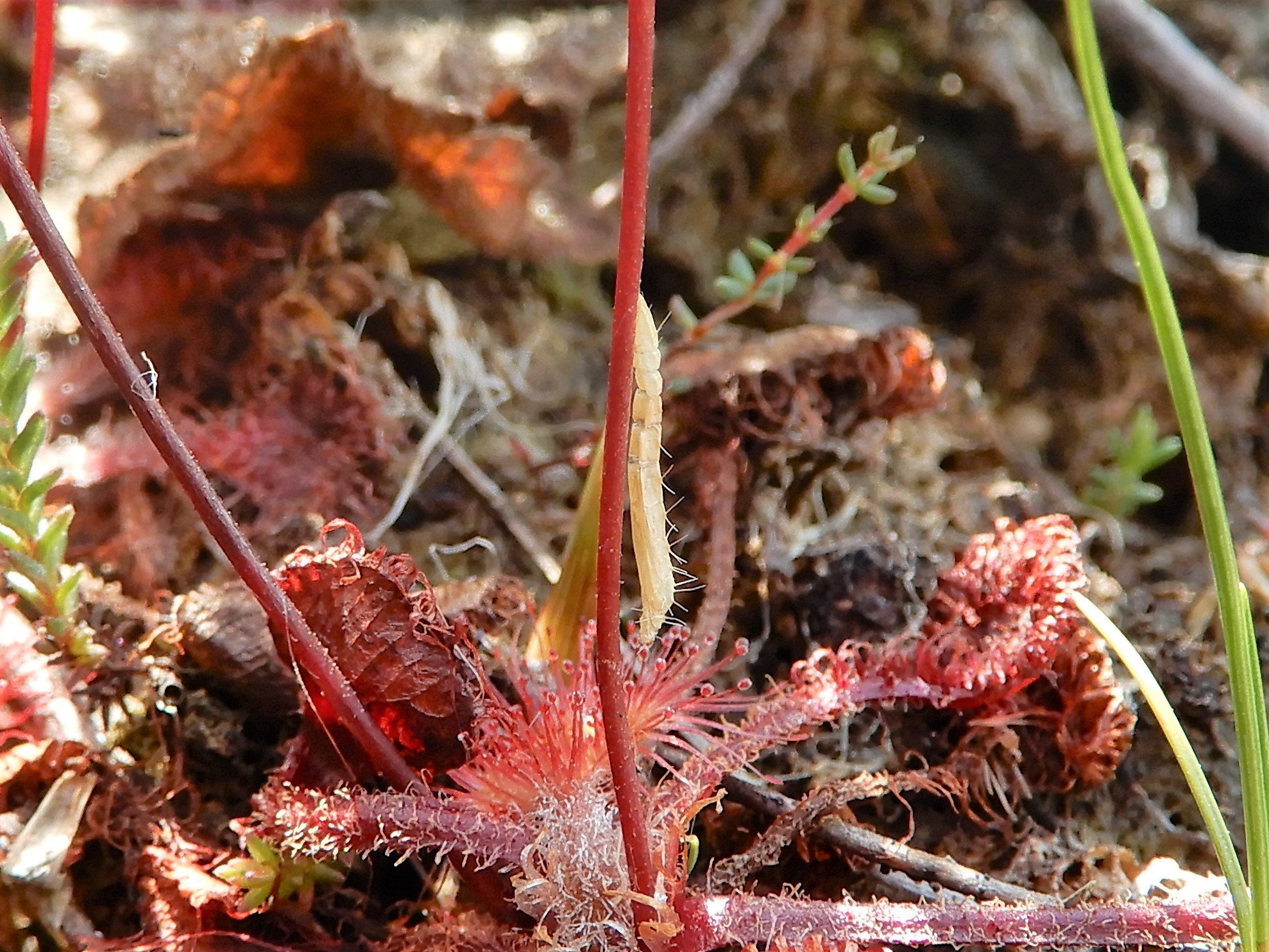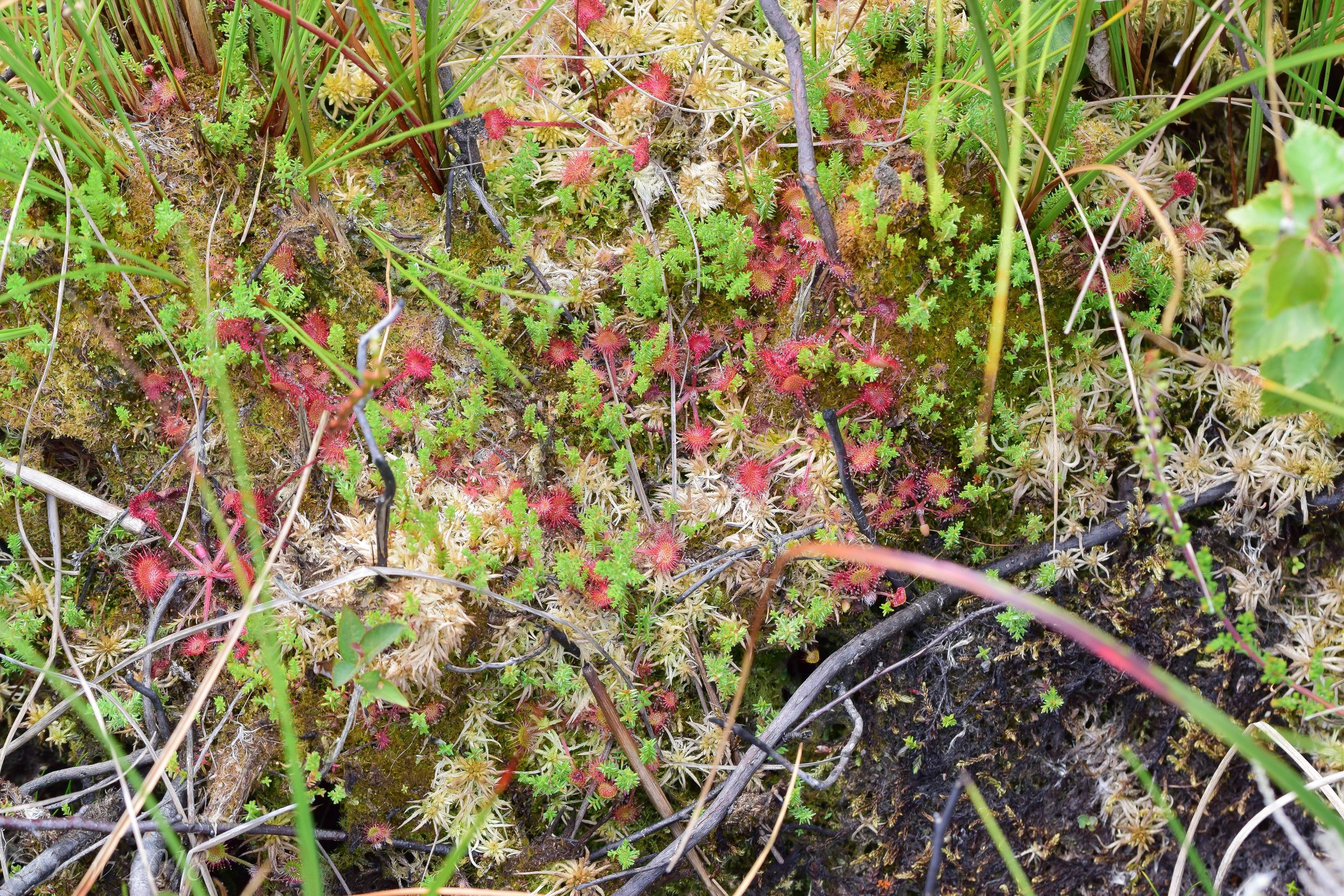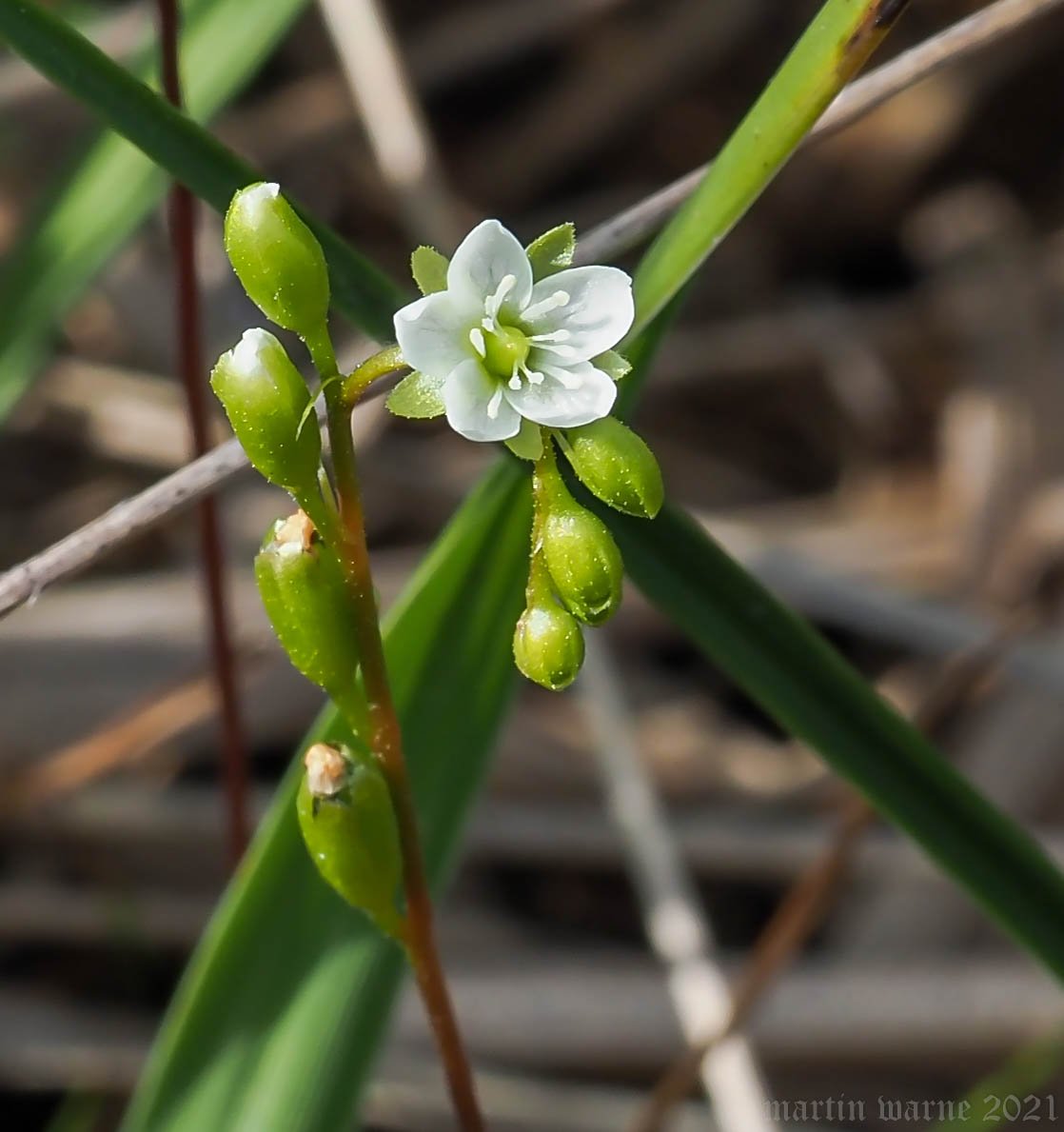#11 Sundew Plume Moth by Helen Kirk
Meet Helen Kirk, field naturalist and peatland campaigner!
Helen is passionate about environmental conservation and wildlife and is a keen peat campaigner and field naturalist. She is largely a local patch worker on Thorne and Hatfield Moors just outside of Doncaster, but is an occasional visitor to other areas in the Humberhead Levels and Yorkshire with some ‘trespassing’ further afield! Helen was awarded a British Empire Medal in 2013 for her services to nature conservation on Thorne and Hatfield Moors, but always likes to pay tribute to those before her, those she had the honour to work with (and still does), and hopefully to future generations who will take up the baton to safeguard these amazing sites. Helen is also the Executive Secretary of the Thorne and Hatfield Moors Conservation Forum, for which you can find news, events, and blogs here. You can read more about some of her work here, and follow Helen on Twitter at @4peatssake2.
Sundew Plume Moth © Helen Kirk
Helen’s chosen species is the Sundew Plume Moth Buckleria paludum. Whilst she muses that it may not be iconic in the same way as some of our other Yorkshire species – not big, cuddly, or particularly colourful – it makes up for this in its fascinating life cycle and tenacity. Plume moths are a family of Lepidoptera with unusually modified wings, consisting of curved spars and bristles. They rest with their wings rolled up, and at first glance can be mistaken for a piece of dried grass. Growing to around 12mm, the Sundew Plume Moth is a nationally scarce and localised plume moth that inhabits damp moorland and peat bog. In Yorkshire, the population is listed as very rare and very local, but likely (pers. Comm. H. E. Beaumont) to be the largest in the country. With its russet and black and white forewings, it is relatively distinctive compared to other small plume moths. Its larvae feed on the carnivorous Round-leaved Sundew (Drosera rotundifolia). This is unusual, considering small larvae would usually be considered a good meal for a sundew. Instead, it’s thought that the larvae of Buckleria paludum can disarm the trichomes (hairs) on the Sundew by licking off the globes of mucilage that allow for the hairs to stick. There are two generations of this moth, one in June and again in August. Helen chose this species partly for their apparent tenacity, interesting life cycle, and character. After having more time on her hands for fieldwork after a redundancy in 2018, Helen was out on the moors with fellow naturalist Martin Warne and as fate had it, on 18 July 2018, exactly 127 years to the day when in 1891 George Taylor Porritt first discovered these enigmatic Sundew Plume moths on Thorne Moors, they too hit the jackpot, rediscovering the species after more than a century’s absence!
Thorne and the neighbouring Hatfield Moors have a long history of peat extraction, and decades of this practice has caused untold damage across the sites. Drainage to facilitate peat extraction and fires ravaged the Moors, so it was astonishing to locate some 20 adults on areas of the Southern Canals on Thorne Moors in July 2018 – now considered to be a nationally important population. That this population had survived industrial scale peat extraction for horticultural use as well as a seriously significant fire in 1911 has to show ‘true Yorkshire grit’? However, with particular habitat requirements, the continued loss of peatland habitats with Sundew has caused decline at a national level for this species, emphasising the importance of ongoing conservation work across our peatlands. Details reporting this important discovery in the area featured in Atropos 63 “In Search of a Rare Yorkshire Moth: Sundew Plume Buckleria paludum (Zeller, 1841)”. It is hoped to provide an update at least to the level of counts of the various life stages and any other useful observations that will assist the understanding of this enigmatic species, and that it might make a useful contribution to habitat management on the NNR at Thorne Moors SSSI.
This discovery has led to many a day spent in very wet, almost inhospitable terrain for Helen, at temperatures that bring out too many biting midges, mosquitoes and other similar critters intent on drawing blood. But once bitten by the bug of interest and fascination the ambition to better understand the autecological requirements for this beauty drives the determination for more discovery. Its amazing rediscovery is another shining example of local naturalists exploring areas away from the popular or easy in the hope of discovery.
Monitoring
Helen and colleagues gather basic data for this species, including counts of various life stages and associated plant material. She has tried to interest a national NGO with a proposal to interest a University with a detailed study on the species, but thus far this has not occurred. The species is hard to monitor given its autecological requirements and the relative difficulty of accessing the areas on Thorne Moors where its ideal habitat occurs. Please remember that general moth records can always be submitted to your Vice County moth recording scheme coordinator.
Further information and acknowledgements
NEYEDC would like to thank Helen for her time and expertise in helping to create this blog. If you’d be interested in contributing a piece for the series, contact Lucy at lucy.baldwin@neyedc.co.uk. To find out more about biological recording, see the Naturalists page on our website.


